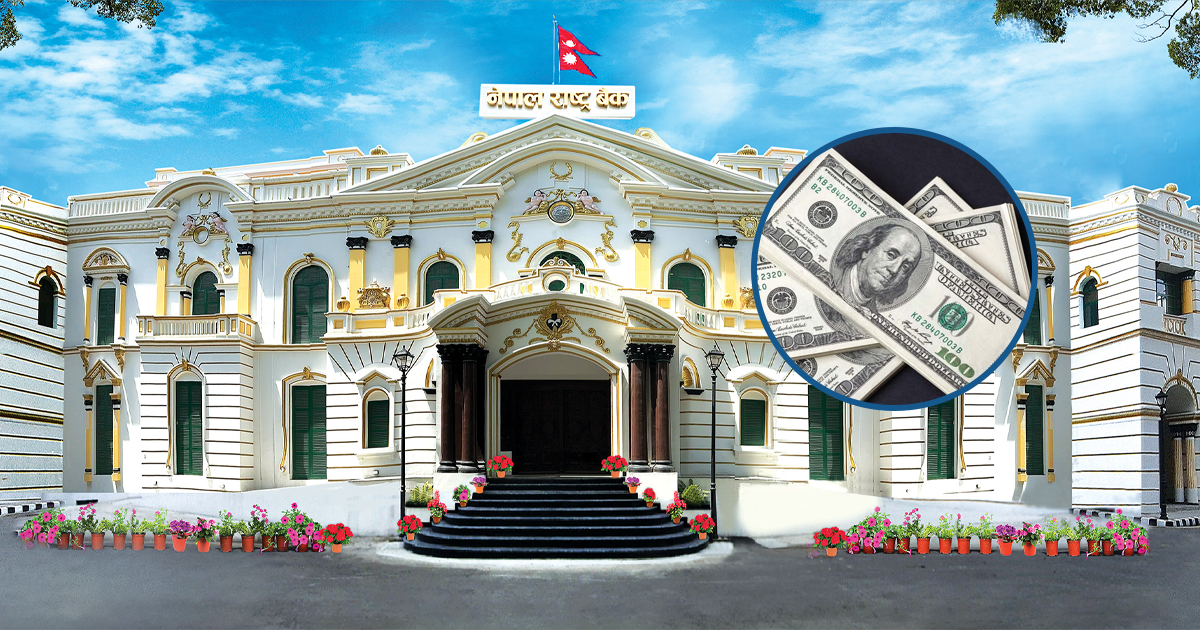Kathmandu: Nepal’s foreign exchange reserves have reached nearly US$ 20.5 billion, marking a steady rise in recent months.
According to the latest data, the reserves increased by 4.7 percent to US$ 20.41 billion by the end of Bhadra 2082 (mid-September 2025), up from US$ 19.50 billion at the end of Asar 2082 (mid-July 2025).
In terms of the Nepali rupee, the total reserves are now close to Rs 29 trillion. Economists say that while domestic economic activity has slowed—causing liquidity to rise in banks—and exports have seen slight improvement, imports have not grown as expected. However, the sharp increase in remittance inflows has led to a continuous rise in foreign currency reserves.
Total foreign exchange reserves, which stood at Rs 26.77 trillion at the end of Asar 2082, rose by 7.6 percent to Rs 28.81 trillion by the end of Bhadra 2082.
Out of this total, the foreign reserves held by Nepal Rastra Bank (NRB) increased from Rs 24.14 trillion in Asar to Rs 25.82 trillion in Bhadra — a 6.9 percent rise.
Meanwhile, the reserves held by banks and financial institutions (excluding NRB) increased from Rs 2.63 trillion in Asar to Rs 2.99 trillion in Bhadra — a 13.7 percent rise.
As of Bhadra 2082, the share of Indian currency in Nepal’s total foreign reserves stood at 22.5 percent.
Despite a slight rise in imports, the much stronger growth in remittance inflows has continued to push up the reserve levels. Based on the import trends of the first two months of the fiscal year 2082/83 (2025/26), the central bank said Nepal’s total reserves are sufficient to cover 19.7 months of goods imports and 16 months of goods and services imports.
By the end of Bhadra 2082, the ratios of total foreign exchange reserves to GDP, total imports, and broad money supply stood at 47.2 percent, 133.1 percent, and 36.6 percent, respectively.
Economists note that this sustained growth in reserves, driven primarily by record-high remittance inflows, has strengthened Nepal’s external position. However, they also warn that the underlying slowdown in domestic production and limited export growth mean the improvement is largely driven by migrant income rather than industrial or trade performance.



Comment Here